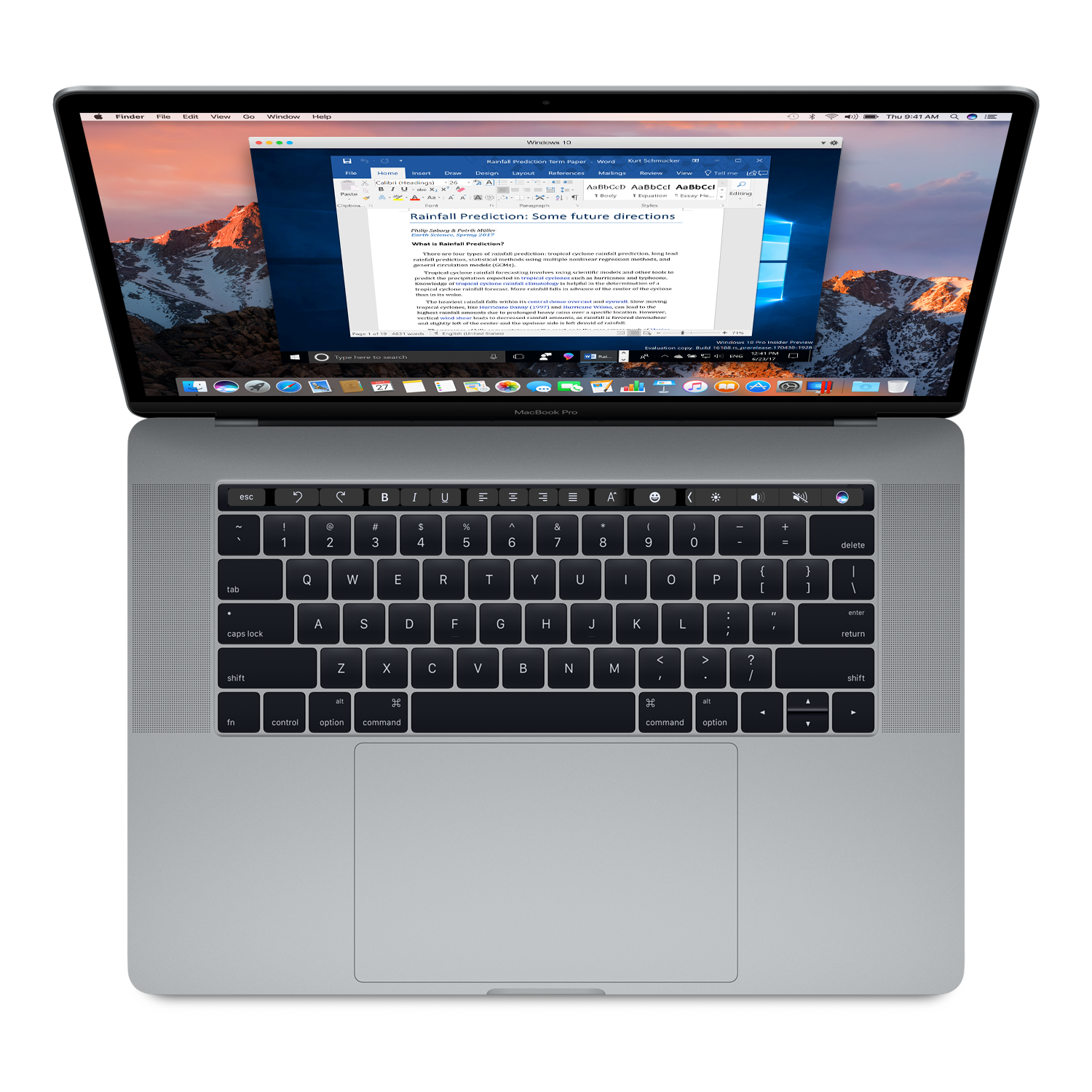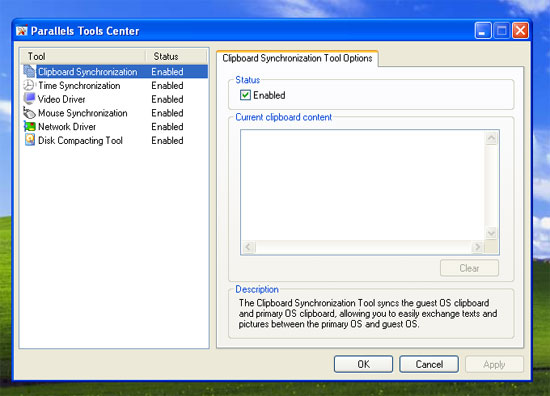Parallels For Mac Overheating
My 20' aluminum iMac seems to be overheating while running boot camp and playing some games. The games run perfectly fine (and look great - Oblivion and Mass Effect), but the top-left of the unit gets extremely hot and at times starts to make a whistling noise. At first I thought it was my. Unfortunately Parallels haven't yet manage to resolve the problem. Apparently the toolbox makes a bsdtar process run at around 100% cpu usage causing the overheating problem. Apart from disabling the toolbox altogether so that it doesn't run on start up I can't see any other way around this issue.
There is a chance that the reason your MacBook is overheating is there's something wrong with the cooling fan itself. Baked into your Mac is a hardware diagnostic tool. If it was made prior to June. To sum up, the overheating of your Mac is directly proportional to how the fans circulate. If there’s any barrier or hindrance that stops the movement of the fans, your MacBook will overheat and eventually crash or shut down without any pre-warning.
MikeIsGood

- Joined
- Mar 20, 2008
- Messages
- 115
- Reaction score
- 3
- Points
- 18
- Your Mac's Specs
- 2010 MBP | 15' 2.4 GHz i5, 4GB
Like I said, this hasn't actually affected the game at all. No slowdown, no forced quits because of low virtual memory or anything. I'm curious if this is something I should be concerned about and, if so, how concerned. Is there any remedy (i.e. can I force the fans to run more to keep it cooler)?
I have zero problems with it otherwise. I'll putting off games for now.
EDIT: Despite no errors of low virtual memory, could that be the problem anyways? If so, it'd probably get me to pull the trigger on upgrading to 4GBs, which I've been meaning to do for a few months.
/Mac Cleaner /iMac OverHeating: How to Fix It
I have a Mac device and I use it for pretty much everything. I use it for work and I also use it for recreational purposes. Recently, I have noticed that my Mac is overheating. Sometimes I touch my device and it literally feels like I'm in hell. Also, my device shuts down by itself all the time. What can I do about this overheating issue?
Parallels For Mac Overheating Disk
~Anonymous Mac Device User
Article GuidePart 1. Introduction to iMac OverHeatingPart 2. How to Fix iMac OverHeating?Part 3. Conclusion
Part 1. Introduction to iMac OverHeating
Is your Mac device heating up too much that it's too hot to touch it? Or is the fan too noisy that you feel like it's overworked? Well, if you're experiencing these you're actually noticing the results of your Mac device’ overheating. This problem is common among a lot of Mac users.
Overheating is not just limited to these two signs. Usually, a Mac that overheats will crash or shut down by itself. This issue is not a light one and you wouldn't I want to ignore it. Overheating can actually slow down the performance of your Mac and it can damage your device’ internal components over time.
You have to remember though that it is actually normal for Mac devices (or any other device) to heat up when it is working heavily and using up many resources.
However, crashing and shutting down because of heat is not a normal scenario. Consistent overheating of your Mac device during times of regular use is probably a sign that you have an issue at hand.
In this guide, we’re going to teach you tweaks to help you with overheating.
Part 2. How to Fix iMac OverHeating?
Obviously, the results of your Mac device’ overheating could be so annoying. Then we'll show you methods to help you fix iMac overheating:
- Prevent vents are blocked and clean up the dust from your Mac device.
- Monitoring the spotlight indexing.
- Checking the device’ Fan.
- Shutting down runaway applications.
- Not using Fan Control applications.
Method 1 - Easy Measures
We will go with the easiest solutions first. You have to use your Mac device and place them on flat surfaces. This allows your device to dissipate heat easily.
Aside from that, you have to ensure that vents are not covered. If you want to use your device on your lap or the bed, minimize the way vents are blocked. Your device might be suffocating because the vents are blocked. Next, avoid using your Mac under the sun. Direct sunlight is very hot and of course, it will lead to overheating.
Finally, you have to clean up the dust from your Mac device. You can use a vacuum cleaner to remove dust built up on your Mac. This dust prevents your Mac from keeping itself cool.
Method 2 - Monitoring The Spotlight Indexing
If you think you are not using your Mac device to perform a heavy task and it still heats up, you have to check out the top right corner of your desktop and look at the magnifying glass icon. If a pulsating dot appears within the magnifying glass it actually shows that Spotlight Indexing of data is happening.
This process is actually automatic and takes a few hours to finish. It also uses up A LOT of Mac’s resources. What you can do is to plug your device to the power.
Then, place it on a flat surface where vents are not blocked. After which, try to do other things while indexing occurs. Just get back to your device once indexing is finished.
Method 3 - Checking The Device’ Fan
Is the fan making a strange noise? Well, there could actually be a physical issue with the fan and this could lead to the device’ overheating.
Here are the steps you can follow in order to run a diagnosis on your Mac device:
Step 1 - Connect your device to the power cable. After which, shut your Mac down.
Step 2 - Press down the Power button while holding the D key down. Do this before the actual startup screen appears.
Step 3 - Follow the specific instructions that will appear on the screen. If you are utilizing an older Mac device, you should select the Basic Test.

Parallels Mac Overheating

This diagnosis process will check out the issues you might have with your fans.
Method 4 - Shutting Down Runaway Applications
If your Mac is constantly overheating, try to use Activity Monitor all the time. You can find it in Applications > Utilities. The Activity Monitor allows you to check out which processes are responsible for overheating.
You just have to click the CPU column to allow you to sort processes from the most active to the least active. If you see an application that is not working on a heavy, important task (as of the moment) but uses nearly 90% of the CPU, then it might be a non-responsive app that is eating up too much of your device’ resources. Or other files as well. For you to find and end up the purgeable space on Mac, you can turn to this link to learn more details: https://www.imymac.com/mac-cleaner/mac-purgeable.html.
You simply have to close these applications. However, if these apps continuously cause you problems, you have to remove them completely. How do you do this? You need to use a tool called PowerMyMac’s Uninstaller to completely wipe out the app.

Here’s how to use the tool:
Step 1 - Download iMyMac PowerMyMac and install it. Then launch it on your device.
Step 2 - Choose the module Uninstaller on the left-hand side of the interface.
Step 3 - Click Scan. Wait for the program to scan the entire device.
Step 4 - The results will show a list of applications on your device. Select the application you want to remove.
Step 5 - Click Clean to uninstall the app.
Method 5 - Not Using Fan Control Applications
Guides will tell you to use third-party fan control apps. This tool enables your fans to run fast. This can actually help address Mac’s temperature heating up for the short-run.
However, it fails to address the actual issue that causes the overheating of your Mac device. It’s also pushing your fans to exert more effort which leads to its wear and tear.
Plus, using a third-party tool to control your Mac’s physical properties can void its warranty. When you discover that a hardware issue is present, you would probably shell a lot of money cause your warranty is already void.
People Also Read:How to Fix 'Safari Not Working on Mac'?How to Fix External Hard Drive Not Showing Up on Mac?
Part 3. Conclusion
Your Mac can overheat because of a lot of issues. You can actually fix these by taking practical measures, monitoring spotlight indexing, checking your Mac’s fans, not using fan control applications, and closing runaway apps.
Aside from these, you can also remove unwanted applications that might be hogging too much of your resources. For this, you can use iMyMac PowerMyMac's Uninstaller. This tool will help you wipe out unwanted applications without causing issues on your device.
ExcellentThanks for your rating.
Rating: 4.7 / 5 (based on 81 ratings)
Parallels For Mac Overheating Upgrade
People Also Read:
PowerMyMac
A powerful all-in-one App for Mac
Free DownloadClean up and speed up your Mac with ease
Free Download